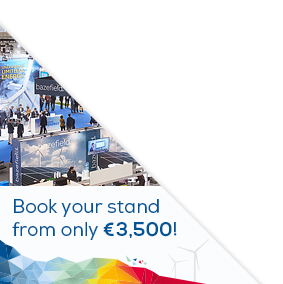Posters
Siblings:
SpeakersPostersPresenters’ dashboardProgramme committeeSee the list of poster presenters at the Technology Workshop 2025 – and check out their work!
For more details on each poster, click on the poster titles to read the abstract.

PO040: Taming Turbulence: A Comparison between Motion Compensation and Machine Learning for FLS measured TI
Giacomo Rapisardi, Data Scientist, EOLOS Floating Lidar Solutions
Abstract
Floating LiDAR Systems (FLS) are essential for delivering cost-effective and high-quality wind data in the offshore wind industry. While the 10-minute average Horizontal Wind Speed (HWS) measured by FLS compares well with traditional cup or sonic anemometers, significant discrepancies arise when assessing Turbulence Intensity (TI). These discrepancies stem from two factors: First, LiDARs measure wind speed over a probe volume, in contrast to the point-based measurements of anemometers, introducing fundamental differences in TI quantification. Second, the motion of the buoy increases the temporal variation of HWS, leading to an overestimation of TI in FLS measurements. To address these challenges, the industry-standard approach applies a physical motion compensation (MC) model to high-frequency LiDAR data, effectively mitigating buoy motion artifacts. However, volumetric effects—particularly significant at higher altitudes and more pronounced in Continuous Wave (CW) LiDARs—remain unaddressed by standard MC alone. To tackle both volumetric and motion effects, EOLOS has developed a novel Machine Learning (ML) model. This approach leverages extensive datasets comparing FLS TI with cup anemometer TI to simultaneously correct both sources of error. Recently validated by DNV on a global scale, and protected under patent, the ML model marks a significant advancement in TI correction methodologies. In parallel, EOLOS has also teamed up with Sowento, in the Neowind EU funded project, to create an enhanced MC algorithm that uses data from an onboard Inertial Measurement Unit (IMU), enabling near-real-time corrections of LiDAR data during test campaigns. This study evaluates the performance of the ML model against the MC algorithm using data from a Pre-Deployment Validation Campaign. The dataset was collected over 39 days (January–February 2024) using the EOLOS FLS200 buoy and the NOAH offshore met mast. The NOAH mast features cup anemometers mounted at altitudes of 52 m, 69 m, 86 m and 103 m AMSL, along with a Fixed Reference LiDAR (FRL). Both the FLS and FRL are ZX300M CW LiDARs. For each 2 m/s HWS bin and measurement height, the uncorrected FLS TI values and those corrected by the ML and MC models were compared against the cup anemometer TI, with additional comparisons between the FRL TI and cup TI. The Mean Bias Error (MBE) was used as the key performance indicator (KPI) to assess correction accuracy, with the standard best practice range -1%








